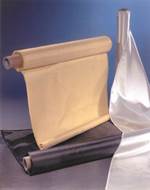Introduction To Composites
Fiber reinforced plastic, or FRP, encompasses an array of engineered materials that are specifically designed to put strength where it's needed while reducing the weight of a structure. Notable advantages of composites for offshore applications are flexibility, toughness, high, strength-to-weight ratio and cor
Fiber reinforced plastic, or FRP, encompasses an array of engineered materials that are specifically designed to put strength where it's needed while reducing the weight of a structure. Notable advantages of composites for offshore applications are flexibility, toughness, high, strength-to-weight ratio and corrosion resistance.
As with any new construction material, engineers need a full understanding of the the material’s properties in order to feel comfortable specifying it. Composites are unique in that, although usually referred to by a single term, there are many types of composites, offering drastically different properties. Properties vary greatly depending on the combination of the two components that make up the material — the resin and the type and form of the fiber reinforcements — as well as the method by which they are manufactured.
This publication provides a brief description of the most commonly used composite materials and manufacturing processes as well as some comparisons to traditional materials.











